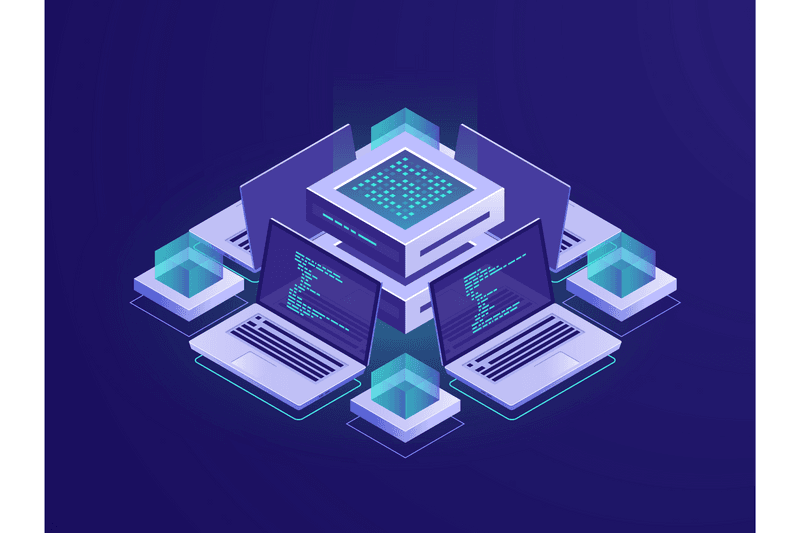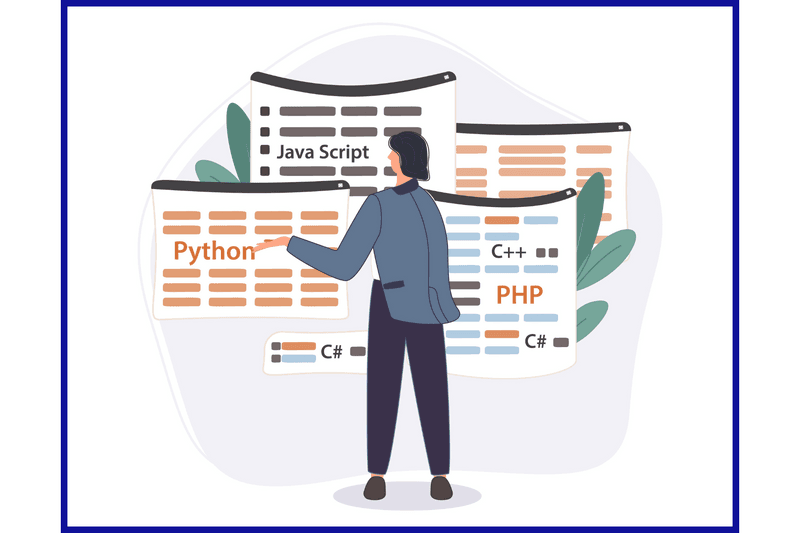
In the dynamic landscape of software development, a technology stack stands as the foundation upon which digital solutions are built. At its core, a technology stack is basically a combination of programming languages, frameworks, tools, and infrastructure used to develop and deploy software applications.
This culmination of technologies, organized in distinct layers, plays an essential role in shaping the functionality, performance, and scalability of digital products.
A technology stack encompasses various layers, including the presentation layer (frontend), logic layer (backend), database layer, and infrastructure layer. Each layer serves a specific purpose, collectively enabling the seamless operation of software applications.
Understanding technology stacks is paramount for software developers, architects, and stakeholders alike. It provides insights into the intricacies of software development processes, facilitating informed decision-making throughout the project lifecycle.
By comprehending the components, capabilities, and trade-offs associated with different technology stacks, stakeholders can optimize resource allocation, streamline development workflows, and ultimately deliver robust, scalable, and efficient software solutions tailored to meet diverse business needs.
Delving into the realm of technology stacks equips people with confidence and foresight so that they can deal with the complexities of modern software development, driving innovation and excellence in the digital age.
The Components of a Technology Stack
Presentation Layer (Frontend)

The frontend, also known as the presentation layer, constitutes the user-facing aspect of a software application. It encompasses the design, layout, and interactivity that users interact with directly.
Overview of Frontend Technologies
Frontend technologies encompass a wide array of tools and frameworks that facilitate the development of user interfaces (UIs). This includes languages like HTML for structuring content, CSS for styling, and JavaScript for interactivity.
Additionally, frontend frameworks such as React.js, Angular, and Vue.js provide developers with powerful tools for building dynamic and responsive UI. Expert ReactJS developers can further enhance these interfaces by integrating REST APIs or GraphQL with Next.js for efficient data fetching. This integration streamlines the flow of data between the frontend and backend, resulting in smoother and more responsive UIs and ultimately improving user experiences.
Role of Frontend in User Interface and Experience
The frontend plays a crucial role in shaping the overall user experience (UX) and UI design of an application. It determines how users interact with the application, from navigation and layout to visual aesthetics and responsiveness.
A well-designed frontend enhances usability, engagement, and satisfaction, which ultimately contributes to the success of the software product.
Logic Layer (Backend)

The backend, also known as the server side, comprises the underlying infrastructure and code that powers the application's functionality and data processing.
Explanation of Backend Technologies
Backend technologies encompass programming languages, frameworks, and databases that enable server-side development. Common backend languages include JavaScript (Node.js), Python (Django, Flask), Ruby (Ruby on Rails), Java Application Development Services (Spring Boot), and PHP (Laravel).
Frameworks like Express.js, Django, and Flask provide structure and utilities for backend development, while databases such as MySQL, PostgreSQL, and Redis handle data storage and retrieval.
Function of Backend in Application Logic and Data Processing
The backend is responsible for implementing the application's business logic, processing user requests, and interacting with the database. It handles tasks such as authentication, authorization, data validation, and server-side rendering.
By processing requests from the frontend and executing complex operations, the backend ensures the application functions seamlessly and securely, delivering dynamic and data-driven experiences to users.
Database Layer
The database layer is fundamental to storing, organizing, and retrieving data within a software application.
Introduction to Database Technologies
These technologies encompass various systems and solutions designed to manage data efficiently. This includes MySQL, PostgreSQL, SQL Server, and Oracle, which organize data into structured tables with defined relationships.
Additionally, there are NoSQL databases like MongoDB, Redis, Cassandra, and Elasticsearch, which offer flexibility and scalability for handling unstructured or semi-structured data.
Importance of Data Storage and Retrieval
Data is the lifeblood of modern applications, and efficient storage and retrieval are paramount. The database layer ensures that data is stored securely, organized logically, and retrieved fast when needed.
A robust security layer enables applications to manage vast amounts of data effectively, whether storing user profiles, transaction records, or product catalogs. Furthermore, the ability to query, filter, and analyze data efficiently empowers businesses to derive valuable insights, make calculated decisions, and deliver personalized experiences to users.
Infrastructure Layer
The infrastructure layer provides the underlying foundation and resources necessary to deploy, scale, and maintain software applications.
Overview of Infrastructure Technologies
Infrastructure technologies encompass a range of tools and services that support application deployment and operation. These include cloud platforms like Amazon Web Services (AWS), Microsoft Azure, Google Cloud Platform (GCP), and DigitalOcean, which offer scalable computing resources, storage, and networking capabilities.
Moreover, containerization technologies like Docker and orchestration platforms like Kubernetes provide efficient ways to package and manage application components.
Significance of Deployment, Scalability, and Maintenance
Deployment involves releasing an application for use and ensuring it runs smoothly and securely in production environments. Scalability is the ability to handle increasing loads and user demands by dynamically allocating resources as needed.
Maintenance involves ongoing monitoring, updates, and optimization to ensure the application remains available, performant, and secure over time. The infrastructure layer plays a critical role in facilitating these functions, enabling seamless deployment, automatic scaling, and efficient maintenance of software applications.
By leveraging scalable infrastructure solutions, businesses can adapt to changing demands, reduce operational overhead, and focus on delivering value to users.
Types of Technology Stacks
Full Stack
It encompasses all the components necessary for front-end and back-end development within a single framework or platform.
Definition and Characteristics
A full stack tech stack includes tools and frameworks that enable developers to build the entire application, from the UI to the server-side logic and interactions. Full-stack developers are known to be proficient in both frontend and backend technologies, allowing them to work on all aspects of application development.
Advantages
Full-stack development offers versatility and efficiency by allowing developers to work across the entire tech stack. This enables faster development cycles, streamlined communication, and greater control over the end-to-end development process.
Additionally, developers possess a broad skill set, making them adaptable to various project requirements and roles.
Challenges
Managing expertise across multiple technologies can be challenging, requiring continuous learning and staying updated with evolving technologies.
Furthermore, full-stack development may not be suitable for large-scale or specialized projects that require deep expertise in specific domains. It can be challenging to identify the best and the most suitable solution on your own. This is why many businesses prefer using IT consulting services to help them avoid costly mistakes and ensure the success of their software development projects.
In addition, balancing frontend and backend development tasks can lead to potential trade-offs in terms of code quality, performance, and scalability.
Frontend and Backend Stacks
Frontend and backend stacks focus on specific layers of the right tech stack, each with distinct roles and considerations.
Differentiation between Frontend-Focused and Backend-Focused Stacks
Frontend-Focused Stack: A frontend-focused stack primarily emphasizes technologies and frameworks for building the UI and client-side functionality of an application.
It typically includes HTML, CSS, JavaScript, and frontend frameworks like React.js, Angular, or Vue.js. Frontend developers specialize in crafting visually appealing and interactive UI that enhance the user experience. You can see that in custom operating systems for mobile phones.
Backend-Focused Stack: In contrast, a backend-focused stack centers around technologies and frameworks for implementing application logic, server-side operations, and data processing.
It includes programming languages like JavaScript (Node.js), Python (Django, Flask), Ruby (Ruby on Rails), Java (Spring Boot), or PHP (Laravel), along with backend frameworks and databases. Backend developers specialize in designing and building the server-side components that power the application's functionality.
Use Cases and Considerations for Each
Frontend-Focused Stack Use Cases: Frontend-focused stacks are suitable for applications that prioritize rich user interfaces and client-side interactions. They are ideal for projects such as single-page applications (SPAs), web applications, and mobile apps where the user experience is paramount. Considerations include browser compatibility, performance optimization, and accessibility.
Backend-Focused Stack Use Cases: Backend-focused stacks are well-suited for applications that require complex server-side logic, data processing, and scalability. They are commonly used for building web servers, APIs (Application Programming Interfaces), and backend services that handle business logic and data management. Considerations include scalability, security, and data integrity.
Understanding the differences between frontend-focused and backend-focused stacks enables developers and organizations to choose the most appropriate technologies and architectures for their specific project requirements and goals.
Why Does the Tech Stack Matter?
Impact on Performance
The stack chosen for a software application significantly influences its performance and efficiency.
How the Choice of Technology Stack Affects Application Performance
The stack directly impacts various aspects of application performance, including speed, responsiveness, and scalability.
Factors such as programming languages' efficiency, frameworks' and library performance, and databases' scalability can all influence an application's performance under different conditions.
Importance of Optimization for Speed and Efficiency
Optimization, as a role, ensures that an application performs optimally. By choosing the right technologies and implementing efficient coding practices, developers can minimize latency, reduce resource usage, and enhance overall responsiveness. Techniques such as code optimization, caching, and load balancing can further improve performance and scalability. Additionally, ongoing monitoring and performance testing allow developers to fix the bottlenecks.
To Sum It Up
Technology stacks serve as the backbone of the modern development of software, encompassing a diverse array of tools, frameworks, and platforms. By understanding the intricacies of stacks, developers can make informed decisions that shape the Performance, scalability, and efficiency of their applications.
From frontend design to backend logic and infrastructure deployment, each layer of the stack plays a critical role in delivering seamless experiences to the user and robust functionality.
Software is constantly evolving, so the importance of choosing the right stack cannot be overstated. With careful consideration and ongoing evaluation, developers can navigate the complexities of technology stacks to create innovative solutions that meet the needs of users and stakeholders alike.
As we look to the future, let us continue to explore new technologies, refine our skills, and leverage the power of stacks to drive progress and innovation in the digital age.
FAQs
What is an example of a technology stack?
One example is the MEAN stack, which is commonly used for building dynamic web applications. MEAN stands for MongoDB, Express.js, Angular, and Node.js, representing the technologies used in each layer of the stack:
- MongoDB is a NoSQL database that stores data in a flexible, JSON-like format that is suitable for handling diverse and unstructured data.
- Express.js is a lightweight and flexible web application framework for Node.js, providing features for building web servers and APIs.
- Angular: A frontend JavaScript framework maintained by Google that is used for building dynamic and interactive UI.
- Node.js: A server-side JavaScript runtime environment that enables developers to build scalable and event-driven applications.
What is the definition of technology stack?
It is also known as a tech stack and refers to a combination of programming languages, frameworks, libraries, tools, and infrastructure used to build and run software applications.
It encompasses all the layers and components necessary to develop and deploy an application, including the frontend (presentation layer), backend (logic layer), and infrastructure layer.
Each layer of the stack serves a specific purpose, with frontend technologies handling UI design, backend technologies managing application logic and data processing, storing and retrieving data, and infrastructure technologies providing the underlying foundation for deployment, scalability, and maintenance.
The choice of stack can significantly impact the performance, scalability, and maintainability of an application, making it a crucial consideration for software developers and organizations.




